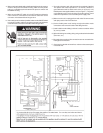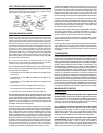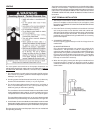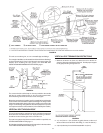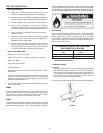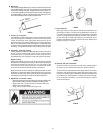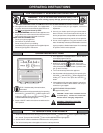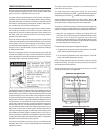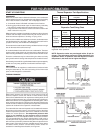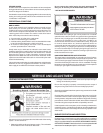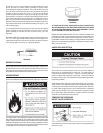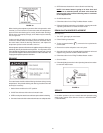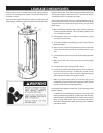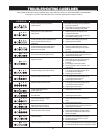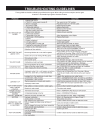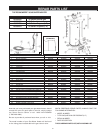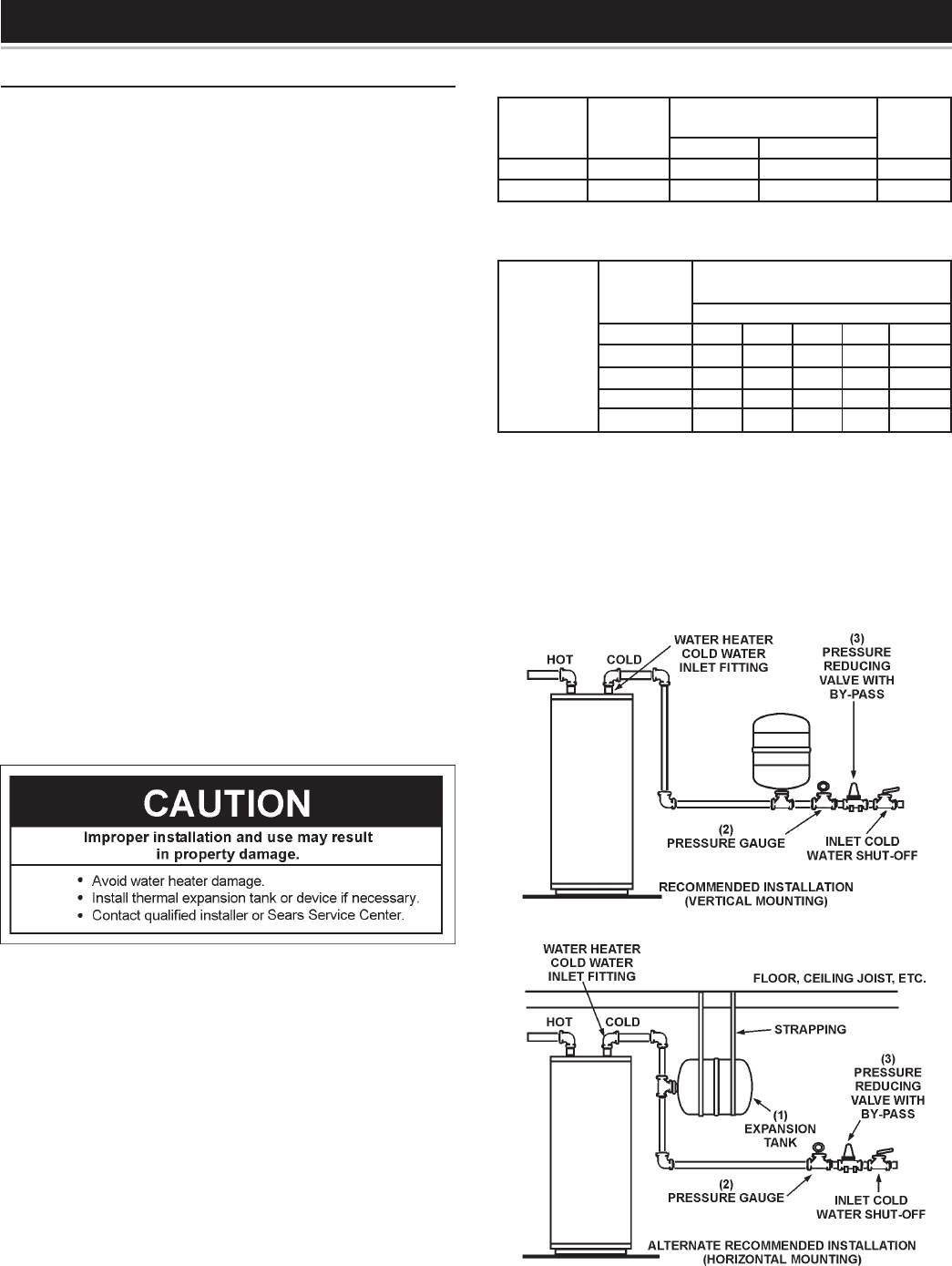
24
FOR YOUR INFORMATION
START UP CONDITIONS
CONDENSATE
Whenever the water heater is filled with cold water, some condensate
will form while the burner is on. A water heater may appear to be leaking
when in fact the water is condensate. This usually happens when:
a. A new water heater is filled with cold water for the first time.
b. Burning gas produces water vapor in water heaters, particularly
high efficiency models where flue temperatures are lower.
c. Large amounts of hot water are used in a short time and the refill
water in the tank is very cold.
Moisture from the products of combustion condense on the cooler tank
surfaces and form drops of water which may fall onto the burner or
other hot surfaces to produce a “sizzling” or “frying” noise.
Because of the suddenness and amount of water, condensate water
may be diagnosed as a “tank leak”. After the water in the tank warms
up (about 1-2 hours), the condition should disappear.
Do not assume the water heater is leaking until there has been enough
time for the water in the tank to warm up.
An undersized water heater will cause more condensation. The water
heater must be sized properly to meet the family’s demands for hot
water including dishwashers, washing machines and shower heads.
Excessive condensate may be noticed during the winter and early
spring months when incoming water temperatures are at their lowest.
Good venting is essential for a gas fired water heater to operate properly
as well as to carry away products of combustion and water vapor.
SMOKE/ODOR
It is not uncommon to experience a small amount of smoke and odor
during the initial start-up. This is due to burning off of oil from metal
parts, and will disappear in a short while.
THERMAL EXPANSION
Water supply systems may, because of such events as high line
pressure, frequent cut-offs, the effects of water hammer among
others, have installed devices such as pressure reducing valves, check
valves, back flow preventers, etc. to control these types of problems.
When these devices are not equipped with an internal by-pass, and no
other measures are taken, the devices cause the water system to be
closed. As water is heated, it expands (thermal expansion) and closed
systems do not allow for the expansion of heated water.
The water within the water tank expands as it is heated and increases
the pressure of the water system. If the relieving point of the water
heater’s temperature-pressure relief valve is reached, the valve will
release the excess pressure. The temperature-pressure relief
valve is not intended for the constant relief of thermal
expansion. This is an unacceptable condition and must be corrected.
It is recommended that any devices installed which could create a
closed system have a by-pass and/or the system have an expansion
tank or device to relieve the pressure built by thermal expansion in the
water system. Expansion tanks are available through Sears stores
and Sears Service Centers. Contact Sears Service Center for
assistance in controlling these situations, see Figure 27.
Thermal Expansion Tank Specifications
Tank Dimensions Pipe
Model Capacity
in Inches Fitting
Number In Gallons Diameter Length On Tank
153.331020 2 8 (203 mm) 12-3/4 (323 mm) 3/4” Male
153.331050 5 11 (279 mm) 14-3/4 (375 mm) 3/4” Male
Expansion Tank Sizing Chart
Inlet* Water Heater Capacity (Gallons)
Water
Pressure 30 40 50 66 80
Expansion 40psi 2 2 2 5 5
Tank 50psi 2 2 2 5 5
Capacity 60psi 2 2 5 5 5
Needed 70psi 2 2 5 5 5
80psi 2 5 5 5 5
*Highest recorded inlet water pressure in a 24 hour period or
regulated water pressure.
NOTE: Expansion tanks are pre-charged with a 40 psi air
charge. If the inlet water pressure is higher than 40 psi, the
expansion tank’s air pressure must be adjusted to match
that pressure, but must not be higher than 80 psi.
FIGURE 27.



